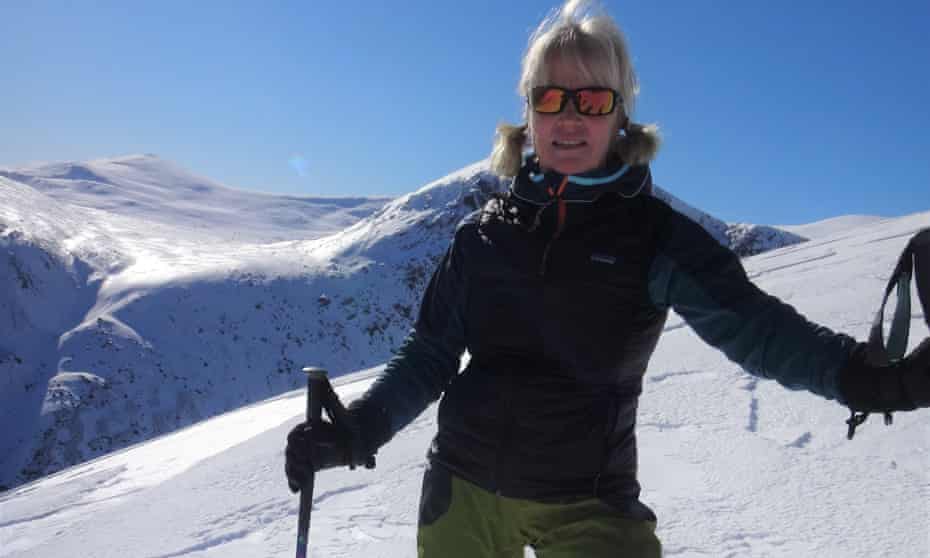Being male and on your phone are biggest dangers on Scottish mountains, says expert
Data covering seven-year period up to the start of 2019 shows that women accounted for only 10 of 114 fatalities

Being male, unable to look beyond your mobile phone and unfamiliar with the avalanche forecast: these are critical risk factors on Scotland’s mountains, according to the country’s foremost female climbing expert.
Heather Morning, who took up her post as chief instructor at Glenmore Lodge, Scotland’s national outdoor training centre, earlier this month, is urging visitors to “think winter” this springtime, as Police Scotland revealed on Friday that mountain rescues are up 40% in recent weeks, with climbers misreading treacherous conditions on the peaks. Seven people have died on the hills this month alone.
Morning, who is based in Aviemore, 50 miles north-east of Fort William, said: “Into March, we get longer daylight hours, and down in the glen here it very much feels like summer. People aren’t switched on to the fact they might still need an ice axe and crampons up high.”
With snow still falling in the Cairngorms, the warmer days and frosty nights combine to make conditions even more dangerous, with melt water turning to hard ice.
“Inevitably, we see fatalities of people stepping on old hard snow, taking flight and rattling off into rocks or off cliffs. Loss of life is complex, but there are definitely some trends. Virtually all fatalities on the Scottish mountains are men. Men over 60 are the demographic that get into difficulties”.
In her previous role as mountain safety adviser at Mountaineering Scotland, Morning analysed data covering a seven-year period up to the start of 2019 and discovered that women accounted for only 10 of the 114 fatalities.
She said: “You make generalisations about male and female attributes with regard to risk taking and obviously it doesn’t reflect everybody, but from the many years I’ve spent training people, guys tend to overestimate their ability and give things a go, and don’t think that they need formal skills training, whereas ladies tend to swing way the other way.”
READ RELATED: Silverchair frontman Daniel Johns admits himself to a rehab facility
Women, in Morning’s experience, have far less confidence in their own abilities and are more willing to attend, for example, a navigation course, “which some people think is irrelevant, when it is the absolute cornerstone of safety in the mountains”. She estimates that about 25% of mountain rescue incidents are the result of the “basic navigation error of putting people in the wrong place”.
This male reluctance to learn about navigation overlaps with an assumption among many young people that all they require is an app. “As a younger person, your whole life is oriented around your mobile phone, so it seems very natural to take it into the mountain environment, while a map and compasses feel outdated,” she said.
It is a further challenge to educate people who do not consider outdoor resources are relevant for them. “If we take the classic example of someone driving up from down south to climb Ben Nevis – I suspect that most people you meet on the main track up and never will have never even heard of the avalanche forecast”.
Morning, who originally trained as a typist before being introduced to the Mountain Leader scheme while volunteering with a local youth club, believes that while women increasingly embrace outdoor adventure as much as men, this equality does not translate into those applying leadership qualifications.
She advised Bonnie Boots, the Glasgow-based group that run women-only hillwalking sessions for women from ethnic backgrounds, and has further plans for a training programme to encourage more Bame women on to the leadership path.
Her decades on the mountains have taught her never to make assumptions about an individual’s climbing capabilities, and this extends to dogs. She recalls her initial surprise when a “tiny little chihuahua” arrived with its owner to attend a navigation course she was running in the Ochills.
“Oh my god, it was as hard as nails. The thing came off the hill filthy, having had a ball and it’s done something like 18 Munros. So never judge a book by its cover,” she said.
Source: Health & wellbeing | The Guardian




